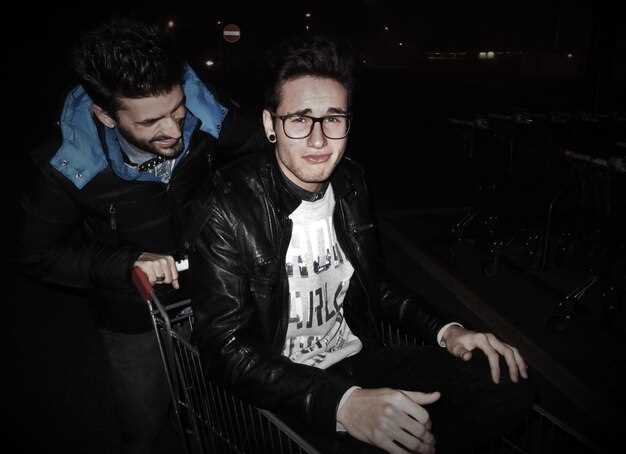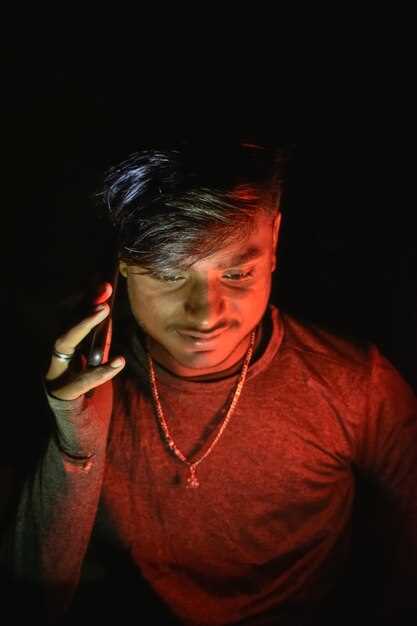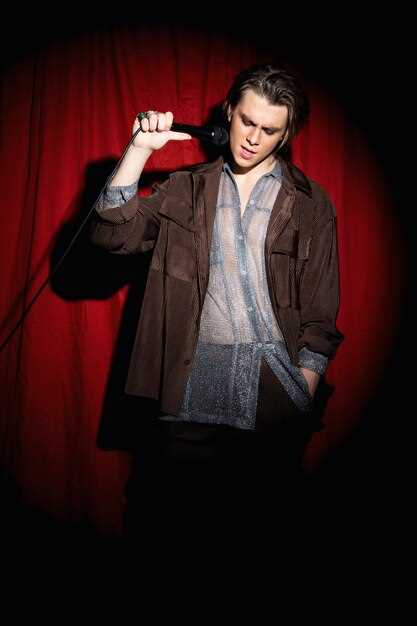Direct response: name the harm in real time, reset the mood, preserve the theme, and keep the show moving. In a live appearance, the powerhouse vocalist confronted a moment that crossed a boundary by a hateful remark, signaling that integrity matters more than a cheap laugh.
In a posting by a critic, those scenes were mentioned in coverage of the moment live on stage. The performer looked toward the crowd and explained that such humor isnt acceptable within a european climate of accountability, inviting listening and reflection.
That moment resonates with fans of kander‘s era, linking the theme of accountability to a broader notion of stagecraft. david, a keen observer, notes how rory and those nearby Sees the pivot in real time, a surprise that changes the energy, and this pisanie from critics highlights how quick correction anchors the show.
That gorilla pace in the room signals a pressure cooker environment, yet timing remains precise. In about twelve beats the atmosphere shifts from discomfort to listening, with the white heat of reaction cooling into a measured response.
Those observations explain the notion that a live moment isnt merely entertainment; it catalyzes a standard that wouldnt exist without explicit signals about intent and impact. The listening practice established here may influence those who follow, ensuring a climate of respect across the scene.
Newsroom Brief
Recommendation: pause the clip’s distribution immediately and publish a concise, transparent account of the incident, the response, and the plan to review moderation norms with the community.
- Event backdrop: headlined by a renowned performer at a city club; during the set, shouts from the crowd erupted after a statement that wouldnt sit well with policy. When the host added a quick clarification, security intervened and the moment slowed the program.
- Context and follow-up: this clip illustrates how controversies spread online and in the room; theres risk of tiresome back-and-forth if not handled with precision; noted this as a point for the venue’s crisis plan, especially between clips and live moments as attention rises.
- History reference: a predecessor incident at another venue informed the current response; the mcilroys couple previously headlined a charity show and are cited in internal notes to calibrate tone and pacing.
- Impact on people and culture: the actor dont underestimate the impact on those who have a stake in this space; this lives in the broader community as a test of standards around humor and respect; the rise of public scrutiny will continue to shape scheduling and outreach.
- What next and practical steps: dont linger on the tiresome cycle; propose a short-term pause, followed by a measured public note that clarifies boundaries, plus an opportunity for questions from the crowd. Consider sharing a clip of the host’s constructive response and decisions about the next program, as well as scheduling moana-themed or general comedy pieces, ensuring songs are rotated to reflect sensitivities.
Timeline of the incident: what happened on stage and Lambert’s intervention
Begin with precise timing and a separate clip review to weigh what happened; capture a video to illustrate the sequence, seven seconds before the clash, and again after.
At the moment a sally near the front row uttered a prejudiced remark, the performer paused the set, then spoke with fortitude, inviting restraint rather than escalation.
An intervention followed: the artist delivered a direct rebuke of that thinking, emphasizing dignity, safety, and the should rule that respect governs all cabarets. Several spectators commented that the move changed the atmosphere.
Video clips circulated quickly, showing the crowd’s mood began to rise; Moana and seven others raised voices, they’ve weighed in with varied opinions. todays cabarets, queer voices rise, and the debate framed what comes next in terms of accountability and boundaries.
Later comments described this as a single, illustrative moment; the gorilla in the room metaphor resurfaced in posts, adding fortitude to the discussion. Some think it should lead to new standards; others worry about censorship, and some note that allowing such remarks can escalate toward harm, even murder.
These exchanges will weigh life, trust, and accountability; the coming shows may adopt new norms, and the moment will be recalled again when organizers think about safety during performances and after, before more tests of virtue arise.
In summary, the incident demonstrates how seven separate perspectives illustrate how the future of cabarets and the scene will move forward with careful dialog, added fortitude, and a commitment to inclusive spaces.
Audience reactions and social media responses: who spoke up and why it mattered
Begin with a precise audit of voices appearing on video posts and in social feeds to identify who spoke up and why, then translate motives into theatre-community guidelines.
Between american and europe audiences, reactions varied: some were shocked; others pushed toward accountability, and a few referenced january threads to illuminate nazism context.
On video discourse, mcilroys emerges as a rare, measured voice urging context-first replies; theyre stance reframes what counts as learning in public discussions. heres the key.
Theatre insiders note a queer perspective, with a surprise shift during the conversation; until now the accent of commentators drew attention; starting from a short clip, the debate grew larger, previous exchanges shaping tone.
Video metrics show that viewed clips and received reactions spread quickly; a couple of american outlets got wider reach, todays chatter spanning europe. What isnt shown yet is how long the momentum lasts. The tone here plays out like golf analysis: precise, measured, and sensitive to contextual risk.
Recommendation: establish a rapid response protocol, archive all public statements, and ensure mcilroys and other voices are cited with full context to avoid normalizing harmful rhetoric.
Khan’s reply: what the mayor said and how it frames political discourse
realize Khan’s reply highlights how the mayor’s remarks frame political discourse by tying a single incident to a theatre backdrop, turning crowds into a live audience that gets headlined by broadway-caliber attention.
this isnt neutral analysis: the particular tactics rely on a rise that began in the 20th century, placing life and politics on stage. the mayor said this, framing moana as backdrop and turning crowd energy into policy signals. trolls until the next headline arrives; added pressure comes from the team called to defend civil norms, while abuse spikes.
what to do next: realize these steps, publish a clear transcript, guard against online abuse, create a coming schedule of community meetings, empower a team, label unchecked statements in all-caps to sharpen accountability, and keep the game focused on constructive debate.
these steps showsone resilience, deflecting gorilla abuse and trolling while keeping public life anchored in accountability, not spectacle, even as pressure rises and crowds demand clarity; this approach keeps discourse healthier and less susceptible to manipulation.
Policy and venue prep: steps venues can take to prevent antisemitic remarks during performances
First, publish a policy that prohibits disrespect toward Jews; this means immediate consequences and training for all venue staff in de-escalation and reporting.
Display clear signage at entry points and begin a pre-show briefing that any remarks against protected groups will be halted.
Establish a five-step incident protocol: observe, intervene, document, remove the disruptive individual, and escalate to security if needed. heres how this translates into practice.
Designate a dedicated stage manager and house crew able to address confrontational moments, lingering stares, or shouts by somebody in the crowd without increasing tension.
Embed listening in rehearsals within open theatre practice, include diverse characters such as Jews in Kander works to build solace and broaden perspective.
Prepare a standard response template that can be triggered by a disruptive remark, then pause the action briefly and move the scene toward safe material.
Create alternative dialogue cues so the moment can be redirected without audience escalation; keep the storyline intact.
Install a twelve-month plan with monthly reviews, a public-facing summary, and a clear process that documents incidents and outcomes.
Use instagram monitoring to spot patterns in comments that target Jews; responses must be swift, measured, and anchored in policy, ensuring solace for those affected.
Publish a quarterly report summarizing lessons learned and sharing improvements with theatre staff, artists, and community partners; the process should remain open and democratic.
Audience guidance: how to engage respectfully and report harassment safely
Posting a concise incident note to the club safety channel within minutes is the first step when a biased remark disrupts a performance. In the note, record what was said, who spoke, where it occurred, and the timing. Include contextual details such as days or weekend show slots, and note whether the moment changed the energy in the theatre.
Openly acknowledge nervous energy in the back of the room; even a single moment can spread through crowds during shows. The notion that safety matters should shine in the report, with clear references to actions taken by staff or a powerhouse safety team. If the moment touched groups such as jews, note impressions calmly without speculation, and describe how the room looked and what followed.
Engage respectfully by keeping language neutral in public spaces, avoiding shaming, and directing concerns to staff via private channels. Openly state what you observed, without exaggeration, so the theatre can respond swiftly. Recommend steps such as staff intervention, a pause, a review of policies, at minimum a follow‑up discussion with the actor after the event, and a plan to communicate with the public in a responsible way.
When time allows, prepare a short, shared recap addressed to colleagues in the club, using a simple structure: what happened, who was involved, when, where, impact, and any actions taken. This posting helps the predecessor to align on standards, even if the event occurred in a different week or during every weekend. It supports life in society where all participants feel safe, and it signals openness to learn from these moments rather than blowing them off.
Inventory of remedies includes staff training, clear code-of-conduct reminders, and accessible channels to report. Encourage actors and hosts to model respectful behavior; invite guests to share comments openly via the club’s official channels after shows. If an incident involved a moana reference or other songs, note that context; respect the life and career of those involved, including predecessors and colleagues. The goal remains a stronger, safer venue where john and rory voices help shape guidelines reflecting community values, including mcilroys stories from past days and the lessons learned through each weekend.

 Adam Lambert Scolds Cabaret Audience Member for Laughing at Antisemitic Line">
Adam Lambert Scolds Cabaret Audience Member for Laughing at Antisemitic Line">


